 July 17, 2025 07:00 am
to
July 17, 2025 07:00 am
to July 17, 2025 08:00 am
to
July 17, 2025 08:00 am
to



 July 17, 2025 08:20 am
to
July 17, 2025 08:20 am
to July 17, 2025 08:30 am
to
July 17, 2025 08:30 am
toThis presentation explores the impact of trash on urban watersheds, focusing on its role in sediment capture and downstream transport. Trash negatively affects water quality, habitats, and aesthetics, and can contribute to flooding. The talk highlights strategies for capturing both trash and sediment, with case examples from watersheds discharging onto beaches, including a challenging transboundary watershed in Tijuana, Mexico. Key insights from trash cleanup and sediment dredging activities over the past decade will be shared, offering solutions for managing these pollutants in various watershed types.

This presentation explores the impact of trash on urban watersheds, focusing on its role in sediment capture and downstream transport. Trash negatively affects water quality, habitats, and aesthetics, and can contribute to flooding. The talk highlights strategies for capturing both trash and sediment, with case examples from watersheds discharging onto beaches, including a challenging transboundary watershed in Tijuana, Mexico. Key insights from trash cleanup and sediment dredging activities over the past decade will be shared, offering solutions for managing these pollutants in various watershed types.
 July 17, 2025 08:30 am
to
July 17, 2025 08:30 am
to



 July 17, 2025 08:30 am
to
July 17, 2025 08:30 am
toThe Department of Facility Maintenance has been working with stakeholders since 2019 to develop a Storm Water Fee (SWF) for Oʻahu to support the island's stormwater management needs. The proposed fee will apply to properties with 300 or more square feet of impervious surface, such as rooftops, driveways, and parking lots. The SWF will fund the Storm Water Enterprise Fund, ensuring dedicated revenue for managing and maintaining the island's stormwater system, which includes activities like stream cleaning, beach mouth openings, and stormwater pollution control.
The SWF fee will be based on the amount of impervious surface on each property, which serves as a proxy for the stormwater runoff it generates. The department has developed a rate model to assess different rate structure options and service levels. The model takes into account stormwater operation and maintenance services, as well as capital projects for controlling stormwater volumes and addressing pollutants. The proposal includes stakeholder engagement with residents, businesses, and community groups to gather input and assess the potential impacts on different property types. The goal is to create a more equitable and sustainable funding system for stormwater management on Oʻahu.


The Department of Facility Maintenance has been working with stakeholders since 2019 to develop a Storm Water Fee (SWF) for Oʻahu to support the island's stormwater management needs. The proposed fee will apply to properties with 300 or more square feet of impervious surface, such as rooftops, driveways, and parking lots. The SWF will fund the Storm Water Enterprise Fund, ensuring dedicated revenue for managing and maintaining the island's stormwater system, which includes activities like stream cleaning, beach mouth openings, and stormwater pollution control.
The SWF fee will be based on the amount of impervious surface on each property, which serves as a proxy for the stormwater runoff it generates. The department has developed a rate model to assess different rate structure options and service levels. The model takes into account stormwater operation and maintenance services, as well as capital projects for controlling stormwater volumes and addressing pollutants. The proposal includes stakeholder engagement with residents, businesses, and community groups to gather input and assess the potential impacts on different property types. The goal is to create a more equitable and sustainable funding system for stormwater management on Oʻahu.
 July 17, 2025 08:30 am
to
July 17, 2025 08:30 am
to
 July 17, 2025 09:00 am
to
July 17, 2025 09:00 am
to July 17, 2025 09:30 am
to
July 17, 2025 09:30 am
toTrash negatively affects water quality, ecosystems, and aesthetics, and can cause beach closures and flooding by clogging waterways. Accurately measuring trash loads in streams is difficult due to reliance on land-use assumptions rather than real storm data or specific watershed conditions. Trash is often linked to sediment movement, as seen in urban flood control systems where both accumulate. This presentation explores methods to capture both trash and sediment, with case studies including a complex transboundary watershed in Tijuana discharging into San Diego. Data from cleanup and dredging efforts reveal variations in trash density and composition, which are crucial for designing effective mitigation systems. The session highlights practical projects and lessons applicable across different watershed types.


Trash negatively affects water quality, ecosystems, and aesthetics, and can cause beach closures and flooding by clogging waterways. Accurately measuring trash loads in streams is difficult due to reliance on land-use assumptions rather than real storm data or specific watershed conditions. Trash is often linked to sediment movement, as seen in urban flood control systems where both accumulate. This presentation explores methods to capture both trash and sediment, with case studies including a complex transboundary watershed in Tijuana discharging into San Diego. Data from cleanup and dredging efforts reveal variations in trash density and composition, which are crucial for designing effective mitigation systems. The session highlights practical projects and lessons applicable across different watershed types.
 July 17, 2025 09:30 am
to
July 17, 2025 09:30 am
toA case study from Pierce County, WA, highlights the reassessment of a data-limited Total Maximum Daily Load (TMDL) for Clarks Creek, a high-value stream with a healthy salmon population. Initially listed as impaired for low dissolved oxygen (DO), the original TMDL was based on limited data and modeling. A 5-year reassessment, incorporating additional data and advanced modeling, revealed that traditional stormwater treatment would not effectively address the creek’s issues. The updated approach focuses on improving stream aeration, targeted plant removal, and refined management strategies, strengthening the technical foundation for future water quality protection efforts.

A case study from Pierce County, WA, highlights the reassessment of a data-limited Total Maximum Daily Load (TMDL) for Clarks Creek, a high-value stream with a healthy salmon population. Initially listed as impaired for low dissolved oxygen (DO), the original TMDL was based on limited data and modeling. A 5-year reassessment, incorporating additional data and advanced modeling, revealed that traditional stormwater treatment would not effectively address the creek’s issues. The updated approach focuses on improving stream aeration, targeted plant removal, and refined management strategies, strengthening the technical foundation for future water quality protection efforts.
 July 17, 2025 09:30 am
to
July 17, 2025 09:30 am
toThe stormwater regulatory landscape is evolving to address growing concerns about water quality and environmental protection. Recent trends show agencies moving towards stricter and more comprehensive regulatory frameworks. Key changes include:
1) EPA Actions: The U.S. Environmental Protection Agency (EPA) is issuing stormwater permits under its residual designation authority for previously uncovered commercial, industrial, and institutional sources.
2) Supreme Court Rulings: Key decisions are shaping the interpretation of the Clean Water Act, particularly in relation to groundwater and surface water connections, and enforcement of discharge permits.
3) Emerging Contaminants: Increasing focus on new pollutants, like PFAS, microplastics, and 6PPD-quinone, which will influence future stormwater regulations and permits.
These changes, driven by both judicial decisions and evolving regulatory priorities, highlight the need for municipalities and industries to stay ahead of stormwater compliance challenges.


The stormwater regulatory landscape is evolving to address growing concerns about water quality and environmental protection. Recent trends show agencies moving towards stricter and more comprehensive regulatory frameworks. Key changes include:
1) EPA Actions: The U.S. Environmental Protection Agency (EPA) is issuing stormwater permits under its residual designation authority for previously uncovered commercial, industrial, and institutional sources.
2) Supreme Court Rulings: Key decisions are shaping the interpretation of the Clean Water Act, particularly in relation to groundwater and surface water connections, and enforcement of discharge permits.
3) Emerging Contaminants: Increasing focus on new pollutants, like PFAS, microplastics, and 6PPD-quinone, which will influence future stormwater regulations and permits.
These changes, driven by both judicial decisions and evolving regulatory priorities, highlight the need for municipalities and industries to stay ahead of stormwater compliance challenges.
 July 17, 2025 09:30 am
to
July 17, 2025 09:30 am
to

 July 17, 2025 10:00 am
to
July 17, 2025 10:00 am
to July 17, 2025 10:15 am
to
July 17, 2025 10:15 am
to

 July 17, 2025 10:15 am
to
July 17, 2025 10:15 am
toMālama Maunalua (MM) is a non-profit dedicated to protecting Maunalua Bay through science, education, and hands-on restoration, focusing on mitigating the impact of stormwater runoff. The organization has worked with various partners to address both water and land issues affecting the bay.
In 2024, MM expanded its efforts across O'ahu, supported by new funding from initiatives like the Wai Maoli Hawai'i Fresh Water Initiative, NFWF, and NOAA. MM partnered with the City and County of Honolulu Division of Facilities and Maintenance and 3RWater to launch a Pilot Rainwater Capture Solution Incentive Program. This program provides free rain barrels, rain gardens, and trees to residents, particularly those in greater socio-economic need, marking the first such program in Hawaii to offer direct installation rather than rebates.
The initiative has garnered strong community response, and the goal is to develop a scalable model for other counties in Hawaii. This presentation will cover the program’s development, outreach, partnerships, and progress so far.

Mālama Maunalua (MM) is a non-profit dedicated to protecting Maunalua Bay through science, education, and hands-on restoration, focusing on mitigating the impact of stormwater runoff. The organization has worked with various partners to address both water and land issues affecting the bay.
In 2024, MM expanded its efforts across O'ahu, supported by new funding from initiatives like the Wai Maoli Hawai'i Fresh Water Initiative, NFWF, and NOAA. MM partnered with the City and County of Honolulu Division of Facilities and Maintenance and 3RWater to launch a Pilot Rainwater Capture Solution Incentive Program. This program provides free rain barrels, rain gardens, and trees to residents, particularly those in greater socio-economic need, marking the first such program in Hawaii to offer direct installation rather than rebates.
The initiative has garnered strong community response, and the goal is to develop a scalable model for other counties in Hawaii. This presentation will cover the program’s development, outreach, partnerships, and progress so far.
 July 17, 2025 10:15 am
to
July 17, 2025 10:15 am
toGreen stormwater infrastructure (GSI) offers benefits like stormwater management, flood mitigation, and beautification, but its impact varies based on different stakeholders, including contractors, asset managers, operators, and the public. This session reviews different GSI facility types and emphasizes the importance of considering diverse perspectives when planning and designing GSI solutions. While GSI can improve public spaces, it may also lead to unintended challenges, such as hindering transit access or increasing maintenance costs. The goal is to ensure that GSI solutions are both effective and considerate of the needs of all community members involved.



Green stormwater infrastructure (GSI) offers benefits like stormwater management, flood mitigation, and beautification, but its impact varies based on different stakeholders, including contractors, asset managers, operators, and the public. This session reviews different GSI facility types and emphasizes the importance of considering diverse perspectives when planning and designing GSI solutions. While GSI can improve public spaces, it may also lead to unintended challenges, such as hindering transit access or increasing maintenance costs. The goal is to ensure that GSI solutions are both effective and considerate of the needs of all community members involved.
 July 17, 2025 10:45 am
to
July 17, 2025 10:45 am
to July 17, 2025 11:00 am
to
July 17, 2025 11:00 am
toThis session provides an update on the Ola Waikīkī project, which focuses on improving water quality in the Ala Wai Canal through nature-based solutions. Over the past year, five local organizations and six pilot projects have been selected to demonstrate green stormwater infrastructure strategies. The presentation will showcase these projects, highlight the organizations leading the efforts, and share key insights from community feedback on green stormwater approaches. Join us to learn how local partnerships and innovative design are advancing a cleaner, healthier Ala Wai.


This session provides an update on the Ola Waikīkī project, which focuses on improving water quality in the Ala Wai Canal through nature-based solutions. Over the past year, five local organizations and six pilot projects have been selected to demonstrate green stormwater infrastructure strategies. The presentation will showcase these projects, highlight the organizations leading the efforts, and share key insights from community feedback on green stormwater approaches. Join us to learn how local partnerships and innovative design are advancing a cleaner, healthier Ala Wai.
 July 17, 2025 11:00 am
to
July 17, 2025 11:00 am
toThe Hollenbeck Park Lake Rehabilitation Project in Los Angeles serves as a model for funding multi-benefit stormwater projects that address water quality, flood risks, and community space enhancements. The 21-acre park and lake, located in the Boyle Heights neighborhood, faced poor water quality and flooding issues due to urban runoff. The rehabilitation, funded with $25.3 million from LA County’s Safe Clean Water Program, integrates stormwater treatment, habitat restoration, and public space improvements. The project exemplifies how municipalities can leverage dedicated funding to meet regulatory requirements while providing social, economic, and environmental benefits. It aligns with the city’s One Water LA Plan and highlights the importance of regional collaboration, innovative funding mechanisms, and strategic development in ensuring sustainable stormwater infrastructure

The Hollenbeck Park Lake Rehabilitation Project in Los Angeles serves as a model for funding multi-benefit stormwater projects that address water quality, flood risks, and community space enhancements. The 21-acre park and lake, located in the Boyle Heights neighborhood, faced poor water quality and flooding issues due to urban runoff. The rehabilitation, funded with $25.3 million from LA County’s Safe Clean Water Program, integrates stormwater treatment, habitat restoration, and public space improvements. The project exemplifies how municipalities can leverage dedicated funding to meet regulatory requirements while providing social, economic, and environmental benefits. It aligns with the city’s One Water LA Plan and highlights the importance of regional collaboration, innovative funding mechanisms, and strategic development in ensuring sustainable stormwater infrastructure
 July 17, 2025 11:00 am
to
July 17, 2025 11:00 am
toLocal governments face increasing challenges in managing multiple water resource priorities, such as flood resilience, water quality improvement, aging infrastructure, and regulatory compliance, all while contending with climate change and limited funding. A Comprehensive Watershed Master Plan (WMP) aims to create an efficient framework that addresses these challenges, ensuring regulatory compliance, improving stormwater infrastructure, and enhancing water quality. The plan integrates flood resilience, public health, economic development, and community outreach, while also considering environmental factors like climate change and sea level rise. The WMP includes evaluating watershed conditions, developing capital improvement projects, and planning for long-term management, with a focus on balancing competing needs and achieving multiple environmental benefits.


Local governments face increasing challenges in managing multiple water resource priorities, such as flood resilience, water quality improvement, aging infrastructure, and regulatory compliance, all while contending with climate change and limited funding. A Comprehensive Watershed Master Plan (WMP) aims to create an efficient framework that addresses these challenges, ensuring regulatory compliance, improving stormwater infrastructure, and enhancing water quality. The plan integrates flood resilience, public health, economic development, and community outreach, while also considering environmental factors like climate change and sea level rise. The WMP includes evaluating watershed conditions, developing capital improvement projects, and planning for long-term management, with a focus on balancing competing needs and achieving multiple environmental benefits.
 July 17, 2025 11:00 am
to
July 17, 2025 11:00 am
to

 July 17, 2025 11:30 am
to
July 17, 2025 11:30 am
to July 17, 2025 12:30 pm
to
July 17, 2025 12:30 pm
toUpdates on the Ala Wai Watershed Restoration and Revitalization Project will cover the application of a Systems Thinking approach to address issues throughout the watershed, from the mountain to the near-shore coral reef. The project is divided into five subprojects, including cyberinfrastructure for ecosystem monitoring, alien species harvesting, the Genki Ala Wai Project, engaging academia, and coral reef ecosystem monitoring. A five-year update on the Genki Ala Wai Project will highlight the expansion of test sites using Effective Microorganisms® (EM) Technology for bioremediation, improving water quality in the Ala Wai Canal. Data from the Blue Water Task Force and observations of marine species show the significant positive impact of these efforts, especially on water quality in the Ala Moana Beach Park area.


Updates on the Ala Wai Watershed Restoration and Revitalization Project will cover the application of a Systems Thinking approach to address issues throughout the watershed, from the mountain to the near-shore coral reef. The project is divided into five subprojects, including cyberinfrastructure for ecosystem monitoring, alien species harvesting, the Genki Ala Wai Project, engaging academia, and coral reef ecosystem monitoring. A five-year update on the Genki Ala Wai Project will highlight the expansion of test sites using Effective Microorganisms® (EM) Technology for bioremediation, improving water quality in the Ala Wai Canal. Data from the Blue Water Task Force and observations of marine species show the significant positive impact of these efforts, especially on water quality in the Ala Moana Beach Park area.
 July 17, 2025 12:30 pm
to
July 17, 2025 12:30 pm
toThe City and County of Honolulu’s Office of Climate Change, Sustainability and Resiliency (CCSR) works to enhance community resilience against flooding and other natural hazards. One key initiative is improving participation in FEMA’s Community Rating System (CRS), which offers flood insurance discounts for proactive flood risk management. Currently, Honolulu is a CRS Class 8 community, earning a 10% discount on insurance premiums. This presentation will outline best management practices for reducing flood risk beyond current regulations, including stormwater retention and updated design standards. Case studies and a stormwater modeling study in Waikīkī will demonstrate how these strategies can be applied locally to improve flood mitigation efforts and potentially enhance the City’s CRS rating, increasing overall community resilience.
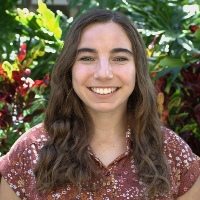
The City and County of Honolulu’s Office of Climate Change, Sustainability and Resiliency (CCSR) works to enhance community resilience against flooding and other natural hazards. One key initiative is improving participation in FEMA’s Community Rating System (CRS), which offers flood insurance discounts for proactive flood risk management. Currently, Honolulu is a CRS Class 8 community, earning a 10% discount on insurance premiums. This presentation will outline best management practices for reducing flood risk beyond current regulations, including stormwater retention and updated design standards. Case studies and a stormwater modeling study in Waikīkī will demonstrate how these strategies can be applied locally to improve flood mitigation efforts and potentially enhance the City’s CRS rating, increasing overall community resilience.
 July 17, 2025 12:30 pm
to
July 17, 2025 12:30 pm
toFAST: Hands-On Stormwater Planning with GIS Tools
This interactive workshop introduces the FAST (Flowpath Assessment and Stormwater Technology) method, allowing participants to model stormwater impacts and green infrastructure solutions in real O‘ahu neighborhoods. Using ArcGIS, LiDAR, and CommunityViz, attendees will explore scenarios and share insights on how this tool can support planning, pollution prevention, and flood mitigation.


FAST: Hands-On Stormwater Planning with GIS Tools
This interactive workshop introduces the FAST (Flowpath Assessment and Stormwater Technology) method, allowing participants to model stormwater impacts and green infrastructure solutions in real O‘ahu neighborhoods. Using ArcGIS, LiDAR, and CommunityViz, attendees will explore scenarios and share insights on how this tool can support planning, pollution prevention, and flood mitigation.
 July 17, 2025 12:30 pm
to
July 17, 2025 12:30 pm
to

 July 17, 2025 01:15 pm
to
July 17, 2025 01:15 pm
to July 17, 2025 01:30 pm
to
July 17, 2025 01:30 pm
to
 July 17, 2025 01:30 pm
to
July 17, 2025 01:30 pm
toThe Surfrider Foundation and The University of Hawaii at Manoa are conducting a survey of water quality impacts to our nearshore environment from extreme weather events. Increased stormwater flow during large rain events often produce brown water in our nearshore. SRF is collecting water quality samples at intervals before, during, and following large storm events to study the impacts to water quality for impacts to both human and ecological health. The Surfrider Foundation has also built a significant rain garden in Kakaako which diverts potentially polluted runoff from a parking lot through a food forest oasis.


The Surfrider Foundation and The University of Hawaii at Manoa are conducting a survey of water quality impacts to our nearshore environment from extreme weather events. Increased stormwater flow during large rain events often produce brown water in our nearshore. SRF is collecting water quality samples at intervals before, during, and following large storm events to study the impacts to water quality for impacts to both human and ecological health. The Surfrider Foundation has also built a significant rain garden in Kakaako which diverts potentially polluted runoff from a parking lot through a food forest oasis.
 July 17, 2025 01:30 pm
to
July 17, 2025 01:30 pm
toEffective stormwater management requires a comprehensive approach that integrates the selection, installation, and maintenance of BMPs. By considering site-specific factors, employing best practices in installation, and committing to regular maintenance, we can maximize the effectiveness of BMPs and significantly reduce the adverse impacts of stormwater runoff. This presentation aims to equip participants with the knowledge and tools necessary to implement and sustain successful stormwater BMPs, ultimately contributing to healthier and more resilient environments.

Effective stormwater management requires a comprehensive approach that integrates the selection, installation, and maintenance of BMPs. By considering site-specific factors, employing best practices in installation, and committing to regular maintenance, we can maximize the effectiveness of BMPs and significantly reduce the adverse impacts of stormwater runoff. This presentation aims to equip participants with the knowledge and tools necessary to implement and sustain successful stormwater BMPs, ultimately contributing to healthier and more resilient environments.
 July 17, 2025 02:15 pm
to
July 17, 2025 02:15 pm
to July 17, 2025 02:30 pm
to
July 17, 2025 02:30 pm
to



 July 18, 2025 08:00 am
to
July 18, 2025 08:00 am
to

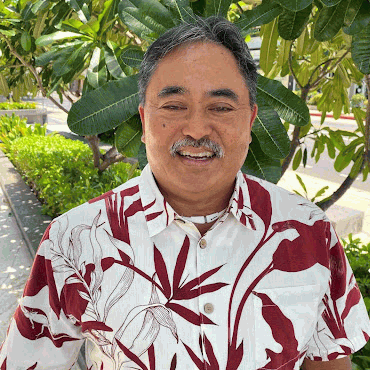



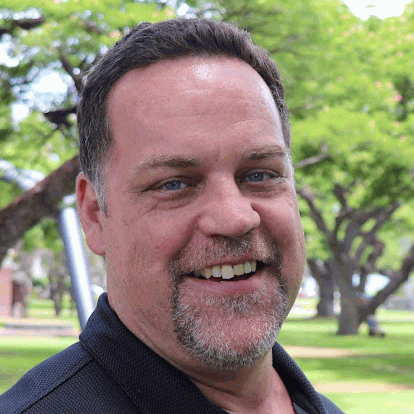
 July 18, 2025 09:00 am
to
July 18, 2025 09:00 am
to July 18, 2025 09:30 am
to
July 18, 2025 09:30 am
toThe South Kohala District on Hawaii Island faces significant flood risks due to intense rainfall and urban development, overwhelming flood protection infrastructure. This presentation focuses on a comprehensive flood study by Brown and Caldwell for the County of Hawaii Department of Public Works, with an emphasis on community involvement. The study assesses current hydrologic and hydraulic conditions to develop effective flood control strategies. Key aspects include updating flood boundaries, advanced modeling to predict flood extents, and the invaluable contributions of local residents who provided videos, photos, and written testimony to aid in model calibration and identify flood-prone areas. The study also evaluates potential flood control measures, considering feasibility, cultural impact, and costs, to develop sustainable mitigation solutions.
This presentation will offer valuable insights into the challenges and innovative solutions for flood management in the region, showcasing the importance of comprehensive planning and community involvement in mitigating flood risks.


The South Kohala District on Hawaii Island faces significant flood risks due to intense rainfall and urban development, overwhelming flood protection infrastructure. This presentation focuses on a comprehensive flood study by Brown and Caldwell for the County of Hawaii Department of Public Works, with an emphasis on community involvement. The study assesses current hydrologic and hydraulic conditions to develop effective flood control strategies. Key aspects include updating flood boundaries, advanced modeling to predict flood extents, and the invaluable contributions of local residents who provided videos, photos, and written testimony to aid in model calibration and identify flood-prone areas. The study also evaluates potential flood control measures, considering feasibility, cultural impact, and costs, to develop sustainable mitigation solutions.
This presentation will offer valuable insights into the challenges and innovative solutions for flood management in the region, showcasing the importance of comprehensive planning and community involvement in mitigating flood risks.
 July 18, 2025 09:30 am
to
July 18, 2025 09:30 am
toIn response to the Federal Facilities Compliance Agreement (FFCA) with the EPA, the United States Marine Corps Base Hawaii (MCBH) evaluated recent development projects for Post-Construction BMP retrofits. The FFCA requires an inventory of projects completed since October 15, 2014, involving ground-disturbing activities, detailing factors like location, impervious area, stormwater pathways, and BMPs. Projects lacking BMPs were assessed for retrofit feasibility based on water quality, sustainability, cost, and potential impacts. A ranking system was developed to score 25 projects suitable for retrofitting, scoring over 50 out of 100 points. This presentation will cover the methodology, ranking system, and retrofit options to improve water quality and enhance sustainability for MCBH’s future development.

In response to the Federal Facilities Compliance Agreement (FFCA) with the EPA, the United States Marine Corps Base Hawaii (MCBH) evaluated recent development projects for Post-Construction BMP retrofits. The FFCA requires an inventory of projects completed since October 15, 2014, involving ground-disturbing activities, detailing factors like location, impervious area, stormwater pathways, and BMPs. Projects lacking BMPs were assessed for retrofit feasibility based on water quality, sustainability, cost, and potential impacts. A ranking system was developed to score 25 projects suitable for retrofitting, scoring over 50 out of 100 points. This presentation will cover the methodology, ranking system, and retrofit options to improve water quality and enhance sustainability for MCBH’s future development.
 July 18, 2025 09:30 am
to
July 18, 2025 09:30 am
toInnovative Capillary Stormwater System: Passive, Sustainable, Resilient
Discover a cutting-edge stormwater system that captures, stores, and reuses water using natural capillary action—no pumps needed. With 95% void space, this passive design supports green infrastructure, reduces runoff, and enhances drought and heat resilience. Learn how it integrates into diverse landscapes to create a more sustainable urban water cycle.

Innovative Capillary Stormwater System: Passive, Sustainable, Resilient
Discover a cutting-edge stormwater system that captures, stores, and reuses water using natural capillary action—no pumps needed. With 95% void space, this passive design supports green infrastructure, reduces runoff, and enhances drought and heat resilience. Learn how it integrates into diverse landscapes to create a more sustainable urban water cycle.
 July 18, 2025 10:00 am
to
July 18, 2025 10:00 am
to July 18, 2025 10:15 am
to
July 18, 2025 10:15 am
toAla Wai Watershed: Targeting Flood Risk with Green Infrastructure
This presentation highlights a collaborative effort to reduce flood risk in Honolulu’s Ala Wai Watershed, where a major storm could impact 3,000+ properties and cost $318M in damages. With nearly half of residents below the ALICE threshold, the project uses GIS-based modeling to identify high-impact locations for green stormwater infrastructure (GSI) on private properties—especially in vulnerable communities. Learn how this initiative is driving change through data-driven strategies and free “stormwater housecalls.”

Ala Wai Watershed: Targeting Flood Risk with Green Infrastructure
This presentation highlights a collaborative effort to reduce flood risk in Honolulu’s Ala Wai Watershed, where a major storm could impact 3,000+ properties and cost $318M in damages. With nearly half of residents below the ALICE threshold, the project uses GIS-based modeling to identify high-impact locations for green stormwater infrastructure (GSI) on private properties—especially in vulnerable communities. Learn how this initiative is driving change through data-driven strategies and free “stormwater housecalls.”
 July 18, 2025 10:15 am
to
July 18, 2025 10:15 am
toCDM Smith collaborated with Los Angeles County Public Works to develop a Green Streets Master Plan (GSMP) for unincorporated areas, identifying 110 sites for green infrastructure retrofits to meet MS4 permit requirements. Using GIS analysis and hydrologic modeling, 5 signature projects were selected to serve as examples for implementation. Preliminary designs included a variety of Best Management Practices (BMPs) like bioretention, pervious pavement, and underground facilities, tailored to different geological conditions. Additionally, CDM Smith supported the City of Los Angeles with stormwater diversion projects for the Stormwater Capture Parks Program, incorporating sustainable elements such as permeable pavement, solar grids, and EV charging stations. The projects aimed to improve water quality, recharge groundwater, and provide community benefits. This presentation highlights green street site screening, selection, design, and how parks can serve as green infrastructure, offering multiple benefits to communities.

CDM Smith collaborated with Los Angeles County Public Works to develop a Green Streets Master Plan (GSMP) for unincorporated areas, identifying 110 sites for green infrastructure retrofits to meet MS4 permit requirements. Using GIS analysis and hydrologic modeling, 5 signature projects were selected to serve as examples for implementation. Preliminary designs included a variety of Best Management Practices (BMPs) like bioretention, pervious pavement, and underground facilities, tailored to different geological conditions. Additionally, CDM Smith supported the City of Los Angeles with stormwater diversion projects for the Stormwater Capture Parks Program, incorporating sustainable elements such as permeable pavement, solar grids, and EV charging stations. The projects aimed to improve water quality, recharge groundwater, and provide community benefits. This presentation highlights green street site screening, selection, design, and how parks can serve as green infrastructure, offering multiple benefits to communities.
 July 18, 2025 10:15 am
to
July 18, 2025 10:15 am
toSmart Ways to Reduce Outdoor Water Use
Learn how simple steps—like fixing leaks, installing rain barrels, and using smart irrigation—can help homeowners cut outdoor water use by up to 15%, saving money and protecting our streams and ocean from pollution and runoff.


Smart Ways to Reduce Outdoor Water Use
Learn how simple steps—like fixing leaks, installing rain barrels, and using smart irrigation—can help homeowners cut outdoor water use by up to 15%, saving money and protecting our streams and ocean from pollution and runoff.
 July 18, 2025 10:45 am
to
July 18, 2025 10:45 am
to July 18, 2025 11:00 am
to
July 18, 2025 11:00 am
toAfter a 20-minute presentation and hands-on app demonstration, participants will learn how to download and use the app to accurately measure their home’s rainwater footprint. They’ll gain the knowledge to determine the optimal size and type of Green Stormwater Infrastructure (GSI) for their property, and will be able to complete their rainwater assessment independently once they return home


After a 20-minute presentation and hands-on app demonstration, participants will learn how to download and use the app to accurately measure their home’s rainwater footprint. They’ll gain the knowledge to determine the optimal size and type of Green Stormwater Infrastructure (GSI) for their property, and will be able to complete their rainwater assessment independently once they return home
 July 18, 2025 11:00 am
to
July 18, 2025 11:00 am
to
 July 18, 2025 11:00 am
to
July 18, 2025 11:00 am
toThis presentation will explore the evolution of Green Stormwater Infrastructure (GSI), focusing on its development in Hawaii and beyond. It will highlight how GSI has adapted to regulatory, environmental, and climatic changes over time, with a focus on long-term sustainability, maintenance, and resilience. The session will showcase examples from Hawaii and other U.S. regions, comparing past designs to modern, innovative solutions. Key developments, such as the CCH DPW GSI Details and the Hawaii Statewide LID manual update, will be discussed to inspire future GSI design choices and implementations.




This presentation will explore the evolution of Green Stormwater Infrastructure (GSI), focusing on its development in Hawaii and beyond. It will highlight how GSI has adapted to regulatory, environmental, and climatic changes over time, with a focus on long-term sustainability, maintenance, and resilience. The session will showcase examples from Hawaii and other U.S. regions, comparing past designs to modern, innovative solutions. Key developments, such as the CCH DPW GSI Details and the Hawaii Statewide LID manual update, will be discussed to inspire future GSI design choices and implementations.
 July 18, 2025 11:30 am
to
July 18, 2025 11:30 am
to July 18, 2025 12:30 pm
to
July 18, 2025 12:30 pm
toThe One Water approach views the water cycle as an integrated system, considering all water flows as potential resources. A comprehensive stormwater management strategy addresses wet weather flows from source to receiving water, incorporating performance, life cycle costs, and benefits of best management practices (BMPs). The Water Research Foundation (WRF) leads stormwater research, including the BMP Database, offering data on over 800 BMPs. The WRF-developed CLASIC tool helps evaluate stormwater infrastructure across various U.S. climates, assessing hydrologic performance, costs, and benefits. Additionally, the growing trend of stormwater capture and use (SCU) is explored, with studies highlighting its role in building water resilience.
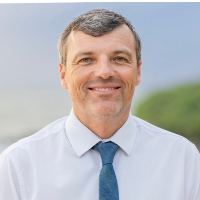

The One Water approach views the water cycle as an integrated system, considering all water flows as potential resources. A comprehensive stormwater management strategy addresses wet weather flows from source to receiving water, incorporating performance, life cycle costs, and benefits of best management practices (BMPs). The Water Research Foundation (WRF) leads stormwater research, including the BMP Database, offering data on over 800 BMPs. The WRF-developed CLASIC tool helps evaluate stormwater infrastructure across various U.S. climates, assessing hydrologic performance, costs, and benefits. Additionally, the growing trend of stormwater capture and use (SCU) is explored, with studies highlighting its role in building water resilience.
 July 18, 2025 12:30 pm
to
July 18, 2025 12:30 pm
toNew Orleans faces significant flooding challenges due to its geography, climate, aging infrastructure, and rising threats like sea-level rise and extreme precipitation. A current study focuses on integrating blue-green stormwater infrastructure (BGSI) with traditional grey infrastructure to manage flooding in the Lakeview, Lake Vista, and Lake Shore neighborhoods. The study uses hydrologic and hydraulic modeling to assess flood risk and identify priority areas.
A BGSI toolbox was developed in collaboration with city partners, incorporating practices like wet ponds, dry detention basins, underground detention, bioretention areas, and permeable pavements. These solutions aim to reduce flooding, improve water quality, and mitigate urban heat islands. This approach exemplifies how combining nature-based and traditional solutions can enhance urban resilience and adaptability in the face of future flooding challenges.
Key learning objectives include understanding how to integrate BGSI with traditional systems, evaluate and prioritize flood risk reduction projects, and optimize community impact, partnership opportunities, hydraulic benefits, and cost-effectiveness.


New Orleans faces significant flooding challenges due to its geography, climate, aging infrastructure, and rising threats like sea-level rise and extreme precipitation. A current study focuses on integrating blue-green stormwater infrastructure (BGSI) with traditional grey infrastructure to manage flooding in the Lakeview, Lake Vista, and Lake Shore neighborhoods. The study uses hydrologic and hydraulic modeling to assess flood risk and identify priority areas.
A BGSI toolbox was developed in collaboration with city partners, incorporating practices like wet ponds, dry detention basins, underground detention, bioretention areas, and permeable pavements. These solutions aim to reduce flooding, improve water quality, and mitigate urban heat islands. This approach exemplifies how combining nature-based and traditional solutions can enhance urban resilience and adaptability in the face of future flooding challenges.
Key learning objectives include understanding how to integrate BGSI with traditional systems, evaluate and prioritize flood risk reduction projects, and optimize community impact, partnership opportunities, hydraulic benefits, and cost-effectiveness.
 July 18, 2025 12:30 pm
to
July 18, 2025 12:30 pm
toThis session covers MS4 training requirements, focusing on who needs training, what content is required, and the training needs for each Minimum Control Measure (MCM). MS4s must train municipal employees, construction contractors, industrial site owners, and the public. Training can be difficult to manage due to its time-consuming nature, high costs, and tracking challenges. With modern Learning Management System (LMS) technology and stormwater-specific content from NMSA, cities can streamline the process, ensure compliance, and make training more efficient. This session will discuss how to save time, reduce costs, and easily track training for all required groups.

This session covers MS4 training requirements, focusing on who needs training, what content is required, and the training needs for each Minimum Control Measure (MCM). MS4s must train municipal employees, construction contractors, industrial site owners, and the public. Training can be difficult to manage due to its time-consuming nature, high costs, and tracking challenges. With modern Learning Management System (LMS) technology and stormwater-specific content from NMSA, cities can streamline the process, ensure compliance, and make training more efficient. This session will discuss how to save time, reduce costs, and easily track training for all required groups.
 July 18, 2025 01:15 pm
to
July 18, 2025 01:15 pm
to July 18, 2025 01:30 pm
to
July 18, 2025 01:30 pm
toThis presentation focuses on the construction stormwater inspection process, offering insights from Third-Party Inspectors and the Storm Water Quality Division. It aims to prepare homeowners, contractors, and ESCP Coordinators for stormwater compliance inspections throughout a project's lifecycle. Key topics include effective implementation of construction stormwater control measures, ensuring documentation is up-to-date, reviewing site maps, and understanding the roles and responsibilities of authorized representatives. The goal is to help attendees be prepared for inspections and ensure their projects meet stormwater compliance requirements.


This presentation focuses on the construction stormwater inspection process, offering insights from Third-Party Inspectors and the Storm Water Quality Division. It aims to prepare homeowners, contractors, and ESCP Coordinators for stormwater compliance inspections throughout a project's lifecycle. Key topics include effective implementation of construction stormwater control measures, ensuring documentation is up-to-date, reviewing site maps, and understanding the roles and responsibilities of authorized representatives. The goal is to help attendees be prepared for inspections and ensure their projects meet stormwater compliance requirements.
 July 18, 2025 01:30 pm
to
July 18, 2025 01:30 pm
toPost-construction BMP requirements in MS4 permits are becoming more stringent with each new permit cycle. This presentation will explore the evolving requirements for Post Construction BMP programs across the country, focusing on areas where these regulations are tightening and municipalities must adapt their strategies for development, implementation, and maintenance. Although there will be no hands-on activities, the session will actively engage the audience in discussion.

Post-construction BMP requirements in MS4 permits are becoming more stringent with each new permit cycle. This presentation will explore the evolving requirements for Post Construction BMP programs across the country, focusing on areas where these regulations are tightening and municipalities must adapt their strategies for development, implementation, and maintenance. Although there will be no hands-on activities, the session will actively engage the audience in discussion.
 July 18, 2025 01:30 pm
to
July 18, 2025 01:30 pm
to

 July 18, 2025 02:00 pm
to
July 18, 2025 02:00 pm
to July 18, 2025 02:15 pm
to
July 18, 2025 02:15 pm
to
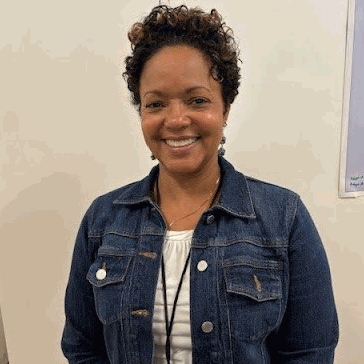
 July 18, 2025 03:00 pm
to
July 18, 2025 03:00 pm
to
 July 18, 2025 03:30 pm
to
July 18, 2025 03:30 pm
to